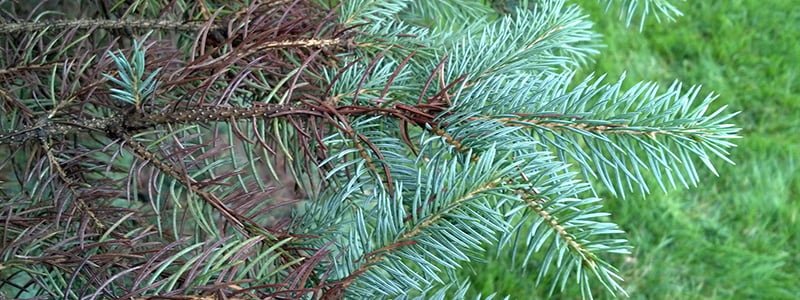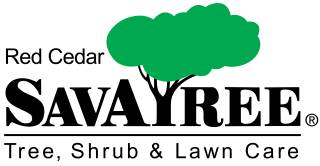Needle cast is a name for a group of fungal diseases found in conifers. The most obvious sign that your conifer tree may have contracted needle cast is if it is shedding needles. Prior to shedding, the needles will begin to show light green to yellow spots before turning completely brown/red.
There are over 40 different kinds of needle cast diseases present in North America, but for our area, Rhizophaera is the most common. This fungal disease is caused by the fungus Rhizosphaera Kalkhoffi. Trees at a higher risk for contracting needle cast are those under high stress like drought, poor planting, or other factors.
Spruce trees in our area often sustain the most damage from needle cast, particularly the blue spruce (the Christmas tree). Prolonged periods of moisture from rain and/or irrigation promote the growth of the fungus.
In winter and early spring, you may begin to see infected needles turning red to brown, starting from their tips. In mid to late spring, the dying of infected needles will likely progress significantly enough to give the overall tree a brown, “burned” appearance. Often once the tree takes on this burned look, homeowners call the professionals looking for a cure for their infected spruce. However, there is no method that will completely cure and remove the Rhizosphaera from the tree. But, there are management methods like repeated applications of fungicide. For this type of management, allow for time to see visible improvements.
By using the right fungicide product/method of application we can help prevent new growth from becoming infected too. The best way to protect new growth is timely application. Shortly after new growth is seen (usually around late May to early June) application should occur. The fungicide then should be applied again a few weeks later. Depending on the size of your tree, special equipment may need to be used to ensure proper and complete coverage.
If you are not interested in treating your infected tree, another solution is tree replacement. At this point the infected spruce would have to be removed and a new tree planted in its place. This may be a good time to consider alternate tree options that may come with less likelihood of pests or diseases. If planting another spruce tree, keeping it healthy from day one is the best way to avoid Rhizosphaera fungal disease. Special care is especially important when the tree is young, as this is when they’re most susceptible.
Prior to any sort of application, or removal it is extremely important to get a proper diagnosis. If you suspect your conifer is suffering from a form of needle cast due to the loss of needles or “burned” look of your tree, please call the professionals as soon as possible. If it is confirmed that your tree is suffering from needle cast, the proper care and plan of action can then be put into place. The correct diagnosis is so important because there are other fungal infections or issues that may result in similar symptoms to Rhizosphaera that can require other treatment and/or management methods.
If you are worried about any of the conifers on your property, or you simply would like to apply some preventative measures, call Red Cedar today and let us help you plan for your tree’s healthy future!

